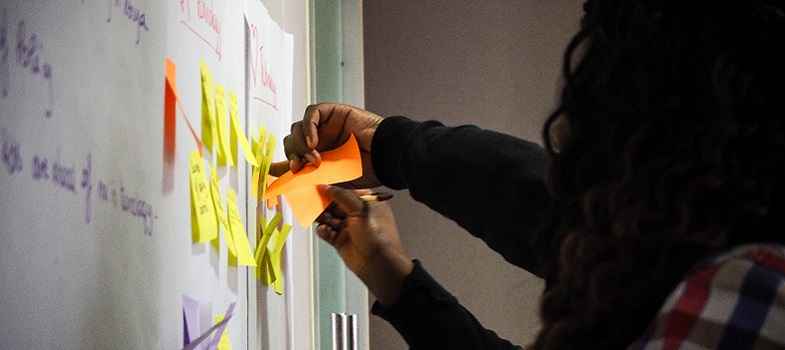Making Digital Decisions: Working together
‘There was division of labour, of sharing of responsibilities. Every department now called its staff and said, ‘Okay, this is what we need to do.’ If it is something that needs many people to do, we share the responsibility among the staff, and we do that through sending circulars, making phone calls, and other means of communication to the staff in the faculty.’ (Director of Academic Planning)
‘Operating online we’re able to share tutors and other staff. If I don’t have it in one side of the country, then we can just meet online and the students are able to be supported. And that also increased collaborations a lot because we realise that we can no longer work in isolation.’ (Faculty member)
Moving online leads to different forms of collaboration across an institution. Subject specialists should work with experts in technology to create effective learning experiences. Staff managing the administrative processes and support of students will need to consider their ways of working too.
Deciding on appropriate technologies for teaching
Online and digital teaching requires collaboration. Most teaching staff are subject specialists rather than technology experts and it is necessary to combine their knowledge with understanding of technologies and pedagogies that work online (Xu and Morris, 2007).
- Teachers should be supported to make decisions about appropriate tools and approaches.
- Experts in educational technology and online learning should be available to work with academics to explore how to support the learning they want to achieve.
- Decisions about technologies require collective decision making that crosses the institution.
Example – decisions about technology should be made collectively:
‘The directorate will now forward all the requirements for online learning and the management will take a decision, and then the department will also forward their requirements through the Dean in the Faculty through the Directorate of the LMS. These are how decisions are taken on technology.’ (Director of Academic Planning)
Systems and processes
Technology and distance changes not only learning, but how institutions need to manage their administrative and support processes.
- Staff in all roles need to be equipped with technology to work wherever they can, and may also need support to cover the costs of internet access and data required to perform their work.
- Where students and staff are at a distance, alternatives to having to be at a specific location such as a campus will be needed.
Communicating and sharing
Working online supports sharing of resources and materials, and also sharing of workload if work is not dictated by location. Decisions may also be needed to create new means of communication between staff, that do not rely on them being in the same location, and to make sure that all staff are involved and have a voice regardless of their location. Use of messaging systems and internal communication platforms as well as emails can improve this ability to work together and form staff communities.
Example – sharing strategies to address issues:
‘I check with colleagues what they do in other places. I’ve called people who are running offices like mine to ask them how they are dealing with the issues. When we decided to have the students do assignments when they can’t attend to quizzes, it’s because others have done it somewhere else.’ (Chair of Department)
Key decisions
- How staff will be able to collaborate in the creation of courses and make best use of their combined expertise.
- How expertise in technology and learning design can be built into the institution.
- How staff will be able to support students and complete actions effectively at a distance.
